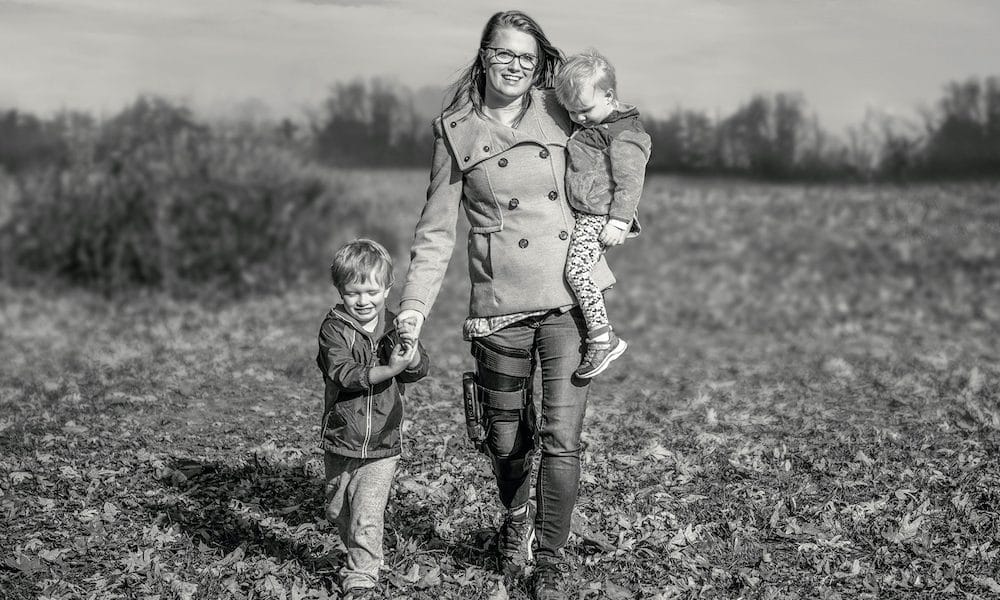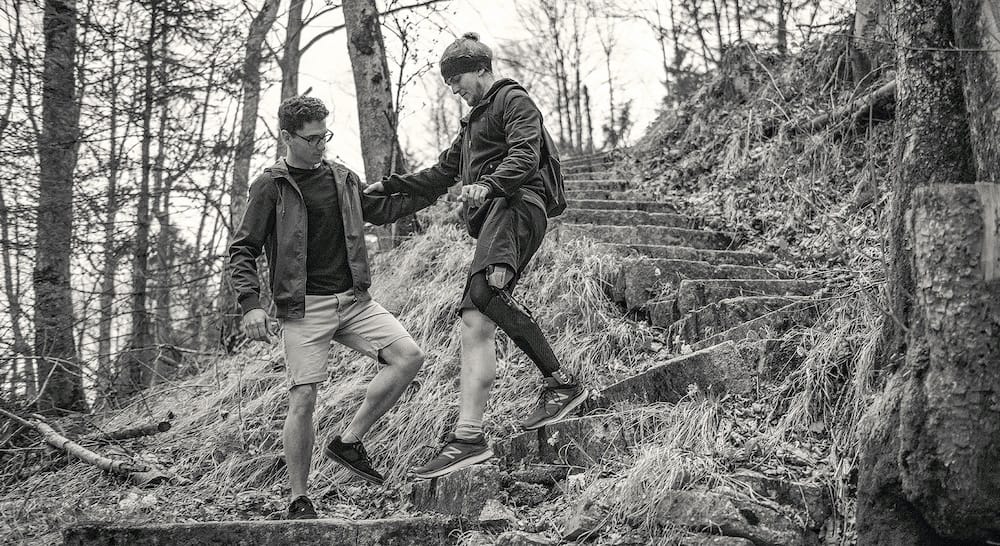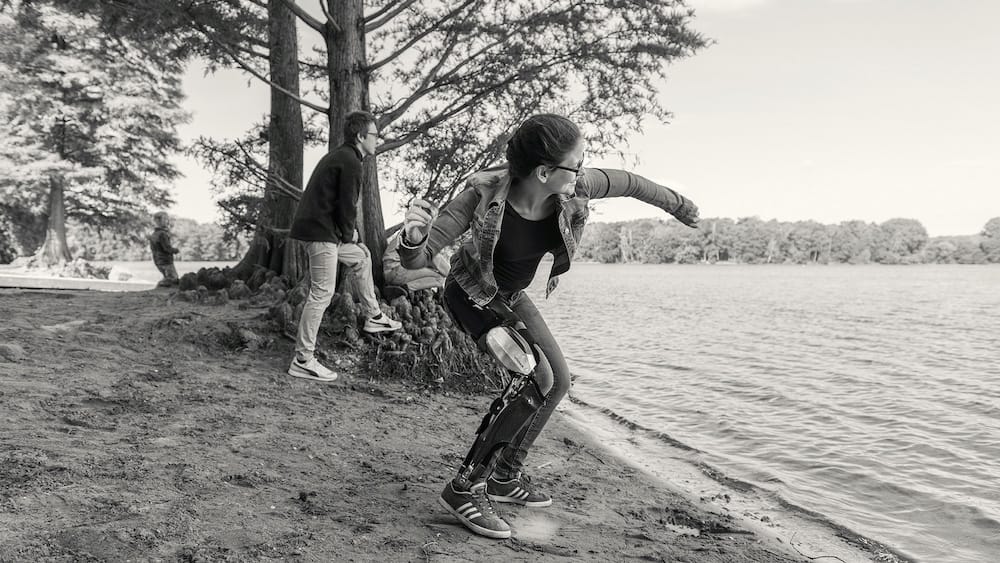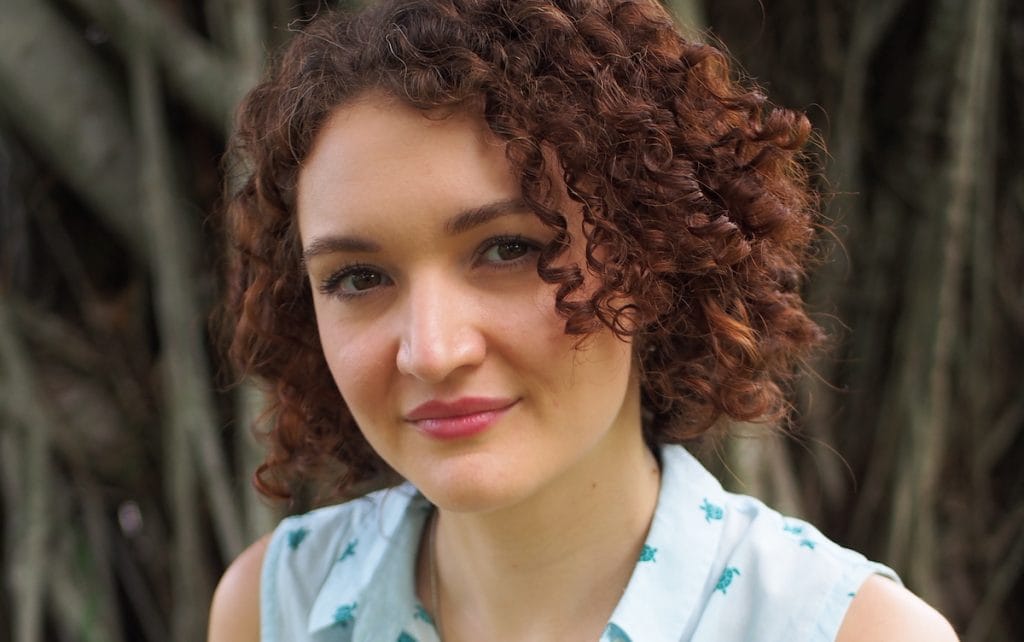
The C-Brace is big news in the progression of Orthotic treatment for neurological conditions. The integration of microprocessor technology into a carbon fibre Knee Ankle Foot Orthosis (KAFO’s) opens up a whole new world of possibilities and mobility for patients dependent on full leg support to stand and walk.
As standard, KAFO users are supplied with locked knee KAFOs. This is where the knee is locked in a straight position throughout their gait cycle, but manually unlocked to allow the user to sit down with their knee flexed. The use of a locked KAFO brings about stability of the knee for users with reduced lower leg muscles strength, when walking on level ground.
However, it also results in the development of multiple gait compensations for the user to progress through the gait cycle with a locked knee. Compensations include; hip hitching on the contralateral side, circumduction during swing phase, and vaulting of the contralateral ankle.
Gait can therefore be slower, require more metabolic energy and increase mechanical stress on the sound leg. Walking on slopes and stairs with a locked knee joint is very difficult and often situations avoided by KAFO users.
An alternative option to the locked KAFO is a Stance Control Orthosis (SCO). In a similar way to the locked KAFO, the knee joint is locked straight during stance phase, but unlocks at terminal stance to allow the knee to flex through swing phase, providing a more natural gait pattern and reduction in compensatory motions to achieve ground clearance.
SCOs require considerable confidence from the user, a consistent step length and are again limited on slopes, stairs and uneven ground. In order to prevent accidental disengagement of the knee lock on challenging surfaces, the user often manually locks the SCO.
Where the C-Brace comes into its own is the significant control available in both stance and swing phase of gait. The system provides stability for the foot and ankle, and stabilises the knee in the sagittal plane with the hydraulic unit replicating the eccentric and isometric muscle contraction of the quadriceps and hamstrings.
It controls both the stance and swing phases of gait with microprocessor sensor technology that can adapt to everyday situations in real time. The technology normalises gait by allowing controlled knee flexion during weight bearing, giving patients the ability to safely navigate quick stops, walk on uneven terrain, and descend slopes, curbs and stairs step over step.
The C-Brace calculates the orientation and movement of the system in space in three dimensions, using this information to control the flexion and extension valves of a hydraulic unit that provide varying levels of resistance to knee flexion. In turn, this allows for physiological knee flexion during loading response, absorbing the shock of weight transfer during heel strike.
In a locked KAFO or SCO, that shock is directly transferred to the pelvis and lumbar spine. Additionally, the C-Brace provides microprocessor swing control that adapts to the varying walking speeds of the patient. It does not require consistent step lengths to function as SCOs do.
Variable step length means a patient can increase or decrease walking speed and length of steps based on the instantaneous activity/mobility needs, making walking safer in unfamiliar or dangerous scenarios like crossing roads.
The C-Brace is also able to provide assistance descending stairs and slopes, allowing step-over-step gait, mimicking the contraction of the quadriceps for lowering the body down a stair or slope. The C-Brace considerably reduces stress to the sound limb in unilateral users, and allows bilateral users to descend stairs and slopes and ambulate on uneven terrain.

Additional features of the C-Brace include:
Stumble recovery: The microprocessor swing control of the C-Brace provides a stumble recovery feature that activates high knee flexion resistance during swing phase extension, in preparation for stance phase, allowing the patient to fully load their orthosis and stabilise the body in case of a stumble.
Intuitive Stance Function: This feature allows the patient to stand in a safe and relaxed manner with a flexed knee without the threat of knee collapse, and automatically switches back in to ambulation mode, turning off the blocked knee flexion when the patient moves. This feature allows the patient to unload the sound leg and rest while securely standing on level or non-level surfaces.
Sitting/Kneeling Function: The C-Brace assists the patient when sitting down and standing up from a chair by providing resistance to flexion or extension.
This adds an extra degree of safety and reduces stress to the upper extremities and the sound limb. The microprocessor automatically detects when the patient begins to sit down, adjusting the hydraulic resistance against bending during the transition to sitting.
Allowing the patient to sit in a controlled manner and at a controlled rate. When standing up from a seated position, the C-Brace blocks knee flexion as soon as the knee reaches a flexion angle of 45° or less, allowing the patient to reposition the foot and load the orthosis, for improved leverage to stand. The kneeling down function allows the patient to kneel down safely with controlled flexion of the knee joint, supported by increased flexion resistance.
Activity specific modes/Freeze mode: The C-Brace is programmable for activity specific needs of the patient in addition to ambulation. For instance, resistance can be reduced to a minimum for cycling, or a flexed knee joint position can be fixed for activities such as Yoga. The user, on their personal C-brace App, can control these modes.

So how can you know if the C-Brace might be right for your patient? The first stage is a thorough assessment, considering both the indications and contraindications of the system.
Indications:
- Flaccid Paralysis or partial paresis of the lower limb
- Quadriceps deficiency leading to poor knee control during stance phase
The patient may present with regular ‘giving way’ of the knee, reporting stumbles or falls when walking on flat, graduated or uneven surfaces. The C-Brace may be appropriate for a number of neurological conditions, including but not limited to:
- Spinal cord injury between L1 and L5
- Polio
- Multiple sclerosis
- Neuromuscular disease
- Muscular atrophy or Traumatic paresis
Essential requirements for the use of the C-Brace:
- The user must be able to stabilise their trunk and stand without support.
- The muscles strength of the hip extensors and flexors must allow the controlled swing of the affected leg, or this must be possible through compensatory hip/trunk movement.
Contraindications of the C-Brace:
- Swing phase initiation is not possible
- Insufficient trunk stability
- Severe spasticity
- Knee or hip flexion contracture of more than 10°
- Non correctable genu varus/valgus greater than 10°
- Body weight less than 40Kg or greater than 125Kg
- Height <140cm
- Leg length discrepancy >15cm
- Fluctuating Oedema or severe skin irritation that precludes the use of an orthosis
The C-Brace Dynamic Test Orthosis (DTO) is a trial orthosis, which features the C-Brace joint unit. The DTO can be set up to each individual user and programmed to their individual gait requirements, allowing users to test the function of the orthosis within the clinical setting.
The DTO can also provide valuable evidence to the function and benefits of the C-Brace for payers. The DTO can be trialled with support from the Ottobock Orthotic Academy Clinician or through Ottobock’s clinical partner Dorset Orthopaedic.
For more information about the C-Brace contact Ottobock or Dorset Orthopaedic through their website enquiry pages: www.ottobock.co.uk or www.dorset-ortho.com.










